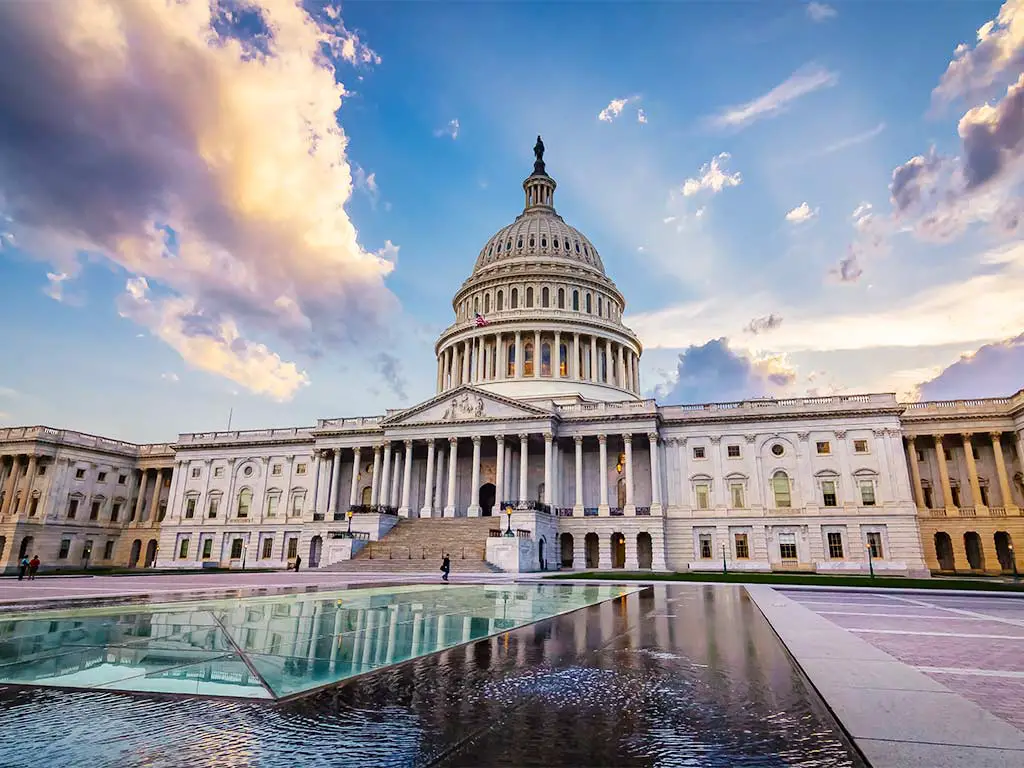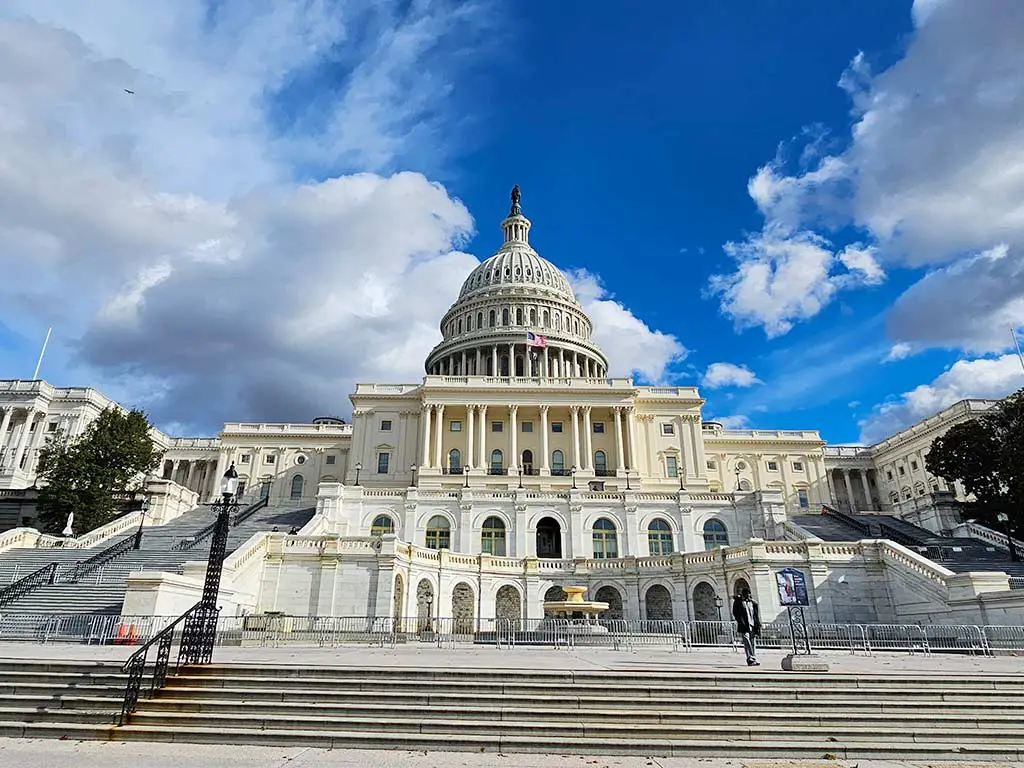If you’ve ever marveled at the iconic United States Capitol in Washington, DC, you’re not alone. This historic building stands as a symbol of democracy and power, steeped in a rich tapestry of events that have shaped the nation’s history.
From its stunning architecture to the significant role it plays in American governance, the Capitol holds a special place in the hearts of many.
With a legacy dating back to the early days of the nation, the Capitol has witnessed pivotal moments in American history, serving as a backdrop for important decisions and landmark legislation.
As you delve into the history of this majestic structure, you’ll uncover tales of resilience, innovation, and the enduring spirit of democracy that defines the United States.
Join us on a journey through time as we explore the captivating history of the Capitol building in Washington, DC, unraveling the stories etched into its walls and pillars that continue to resonate with citizens and visitors alike.
Early History and Construction

The history of the United States Capitol Building in Washington, D.C., is a tale of resilience, ambition, and architectural innovation.
Here’s a glimpse into its early history and construction:
Origin and Design
The United States Capitol building in Washington, DC, holds a significant place in American history, symbolizing the nation’s democracy and power.
The original plan for the Capitol was designed by Pierre Charles L’Enfant, but due to his refusal to submit drawings, William Thornton’s design was eventually accepted, impressing Thomas Jefferson.
The current structure is a result of modifications by architects Benjamin Henry Latrobe, Charles Bulfinch, Thomas Ustick Walter, and August Schoenborn.
Initial Building Phases
Construction of the Capitol faced several challenges and modifications over the years. In 1983, major renovation work began to strengthen and preserve the West Front due to structural problems from defects in the original foundations, deterioration of facing materials, and damage from fires and explosions.
The strengthening involved setting over 1000 stainless steel tie rods, repairing stonework, and replacing 40% of sandstone blocks with limestone. This extensive project was completed in 1987, ensuring the Capitol’s structural integrity.
Architectural Evolution

Expanding the Capitol building to accommodate the growing needs of Congress was a pivotal moment in its architectural evolution.
Let’s delve into the significant changes that shaped the iconic structure over the years.
Adding the Senate and House Wings
By 1850, the Capitol had outgrown its original chambers due to the admission of new states to the Union. This led Congress to approve the addition of grand wings to the building.
In 1851, Daniel Webster commemorated this expansion with a cornerstone-laying ceremony for the new wings.
The House and Senate moved into their respective chambers in 1857 and 1859, marking a crucial phase in the Capitol’s architectural history.
Construction of the Iconic Dome
During the Civil War, work continued on the construction of the cast-iron dome, a defining feature of the Capitol’s architecture.
Designed by Thomas U. Walter, the dome’s crowning moment came on December 2, 1863, when the Statue of Freedom, sculpted by Thomas Crawford, was placed atop it.
Standing at 287 feet above the East Plaza, the dome symbolizes unity and freedom within the Capitol’s architectural landscape.
Art and Decoration

Art and decoration play a significant role in the United States Capitol Building, enhancing its architectural grandeur and cultural significance.
Here’s an overview of the art and decoration found within the Capitol:
Statuary Hall and Artistic Contributions
Statuary Hall, located in the Capitol, is renowned for its collection of statues honoring prominent individuals from each state.
Established in 1864 as the National Statuary Hall, it displays sculptures contributed by states to commemorate influential figures in American history.
Each state has the privilege of selecting two individuals to represent them, resulting in a diverse and historically significant assembly within the Capitol’s walls.
These statues contribute to the rich tapestry of American history showcased within the Capitol building, offering visitors a visual representation of each state’s unique contributions to the nation.
The diverse selection highlights the varied achievements and influences that have shaped our country over time.
Influence of Various Artists
The architectural splendor of the Capitol is not only attributed to its designers but also to the contributions of various artists over the years.
From intricate murals adorning the walls to majestic sculptures positioned throughout the building, artists have played a vital role in enhancing the aesthetic appeal of the Capitol.
Their creations reflect historical events, cultural diversity, and national pride, adding layers of meaning and visual richness to this iconic structure.
Key Renovations and Additions

Several key renovations and additions have shaped the evolution of the United States Capitol Building over the years, enhancing its functionality, preserving its historic integrity, and accommodating the needs of Congress and visitors.
Here are some notable ones:
Modern Expansions
In the mid-19th century, significant expansions were undertaken to accommodate the growing needs of Congress within the United States Capitol.
The wings of the building were extended to house the Senate and House of Representatives more efficiently.
This expansion project in the 1850s was instrumental in providing adequate space for the legislative operations of Congress, reflecting the institution’s expansion and importance in the national governance structure.
During this period, the iconic dome of the Capitol building was also constructed, becoming a symbol of democracy and power in the United States.
The addition of the dome solidified the architectural significance of the building and its role as a beacon of democracy in Washington DC.
Restoration Efforts
Over the years, the United States Capitol has undergone several restoration campaigns to maintain its structural integrity and preserve its historical significance.
Restoration efforts have focused on repairing damages, enhancing interior designs, and integrating new materials to ensure the longevity of the iconic building.
These restoration initiatives not only safeguard the architectural heritage of the Capitol but also highlight the commitment to preserving a symbol of democracy and national pride.
The Capitol as a National Symbol
The United States Capitol Building stands as a powerful national symbol, embodying the principles of democracy, freedom, and governance.
Here’s a closer look at its significance as a national symbol:
Ceremonial and Historical Events
Under the grand dome of the United States Capitol lie the echoes of poignant ceremonial and historical events that shape the nation’s narrative.
From solemn memorial ceremonies honoring presidents to vivid July Fourth concerts, the Capitol serves as a steadfast backdrop to significant public gatherings.
Here, within the hallowed walls of the Rotunda, distinguished individuals receive Congressional gold medals, and the Capitol grounds host a multitude of demonstrations and gatherings, standing as the nation’s foremost public stage.
Public and Political Impact
The US Capitol stands as the focal point of the nation’s political ethos, where the intricate process of addressing national challenges and fostering opportunities unfolds.
As the heart of America’s experiment in political freedom, this iconic building embodies the essence of democracy and political engagement.
From lone orators to vast crowds of demonstrators, people converge at the Capitol to participate in the democratic dialogue that defines the nation’s governance and aspirations. It is a testament to the enduring spirit of democracy and the enduring legacy of the American experiment.
Frequently Asked Questions
What is the history behind the United States Capitol building?
The United States Capitol in Washington, DC, dates back to the nation’s early days and has evolved over the years with major renovations.
Who designed the cast-iron dome on the U.S. Capitol building?
Architect Thomas U. Walter designed the cast-iron dome during the Civil War, and it was completed with the installation of the Statue of Freedom in 1863.
Why is the United States Capitol building significant?
The Capitol embodies democracy and serves as a symbol of political engagement and national values.
What can visitors expect to see inside the U.S. Capitol building?
Visitors can explore various elements inside the Capitol that reflect democratic principles and cultural heritage, including murals, sculptures, and historical exhibits like the Crypt beneath the Rotunda.
How has the U.S. Capitol building evolved over the years?
The Capitol has undergone significant renovations, additions, and restoration efforts to maintain its structural integrity and historical significance.
Conclusion
You’ve now explored the rich history and significance of the United States Capitol building in Washington, DC.
From its inception, influenced by notable architects like Charles Bulfinch and Benjamin Henry Latrobe, to the iconic additions made during the Civil War by Thomas U. Walter, the Capitol stands as a symbol of democracy and national pride.
The continuous growth and evolution of the Capitol, reflected in the additions of the Senate and House wings in 1850, speak to Congress’ expanding role in shaping the nation’s governance.
The striking cast-iron dome, crowned with the Statue of Freedom in 1863, remains a beacon of unity and freedom, embodying the values that define the nation.
Statuary Hall, boasting statues from each state honoring influential figures, and the Capitol’s artistic embellishments through murals and sculptures, depict a narrative of historical events, cultural diversity, and national heritage.
The Capitol’s restoration projects over the years underline the commitment to preserving its structural integrity and historical significance for generations to come.




Allison Brice